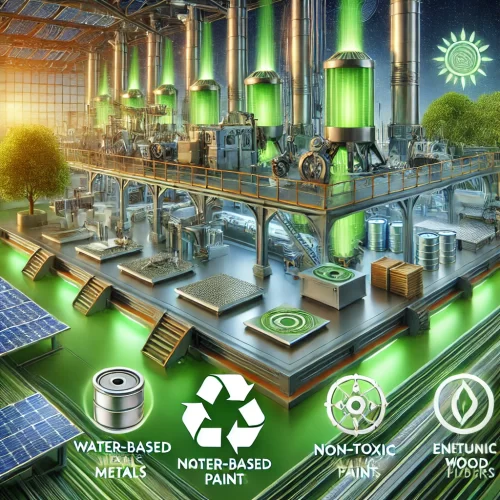Comprehensive Overview of Eco-Friendly Lapel Pin Manufacturing Processes
As global awareness of environmental sustainability grows, more companies and brands are integrating eco-conscious principles into their product designs and manufacturing processes. Eco-friendly lapel pins are small yet meaningful items that not only showcase a brand’s identity but also reflect its commitment to environmental stewardship. This article provides a detailed overview of eco-friendly lapel pin manufacturing processes, from material selection to production techniques, highlighting how they contribute to environmental protection.
1. Material Selection for Eco-Friendly Lapel Pins
The hallmark of an eco-friendly lapel pin lies in the choice of sustainable materials. Here are some of the popular eco-friendly materials used in pin production:

- Recycled Metals: Recycled metals, such as aluminum, copper, and zinc alloys, are widely used in lapel pin production. These metals are reclaimed and processed for reuse, reducing reliance on virgin mineral resources. Additionally, recycled metals maintain their strength and durability, offering the same high-quality finish as new materials. For example, pins made from recycled aluminum are lightweight, durable, and highly versatile in terms of shape and surface treatment.
- Organic Fibers and Recycled Plastics: In addition to metals, lapel pins can incorporate organic fibers or recycled plastics for backing or decorative elements. The backing can be made from biodegradable plastics, which reduces environmental impact after disposal. Pins using organic cotton thread or recycled polyester thread for embroidery ensure that the production process is eco-friendly and less reliant on non-renewable resources.
- Natural Wood: Some lapel pins incorporate natural wood as a sustainable alternative to traditional materials. These woods are sourced from sustainably managed forests and provide pins with unique, natural textures—perfect for brands that emphasize nature and environmental themes.
2. Eco-Friendly Surface Treatment Techniques
Eco-friendly lapel pins emphasize the use of low-pollution and non-toxic surface treatment methods, in contrast to traditional methods that may use harmful chemicals like lead or solvents. Here are some eco-friendly surface treatment options:
- Water-Based Paints: Water-based paints are a popular choice for eco-friendly pins, as they use water as a solvent instead of volatile organic compounds (VOCs). This reduces harmful emissions during the manufacturing process, making it safer for workers and the environment. Water-based paints also provide a non-toxic, safe finish for the pins.
- Lead-Free Plating: Eco-friendly lapel pins avoid the use of lead or other harmful metals in their plating processes. Instead, they use safer alternatives like lead-free nickel, antique copper, or other non-toxic materials for metal finishing. This not only makes the product safe for wearers but also helps protect the environment during production.
- Non-Toxic Dyes: For embroidered lapel pins, using non-toxic, eco-friendly dyes is crucial. These dyes provide vivid colors without harmful chemicals, ensuring that the pins are safe for direct skin contact, especially when used in clothing.
3. Eco-Friendly Lapel Pin Production Techniques
Eco-friendly lapel pins go beyond materials and surface treatments by optimizing the production process to reduce energy consumption and minimize waste. Below are common eco-friendly production techniques:
- Die Struck Process: Die striking is a common method for producing metal lapel pins, particularly when using recycled metals. This process involves striking the design onto the metal surface with precision tools, which creates minimal waste. Afterward, the pins can be plated with eco-friendly metals such as nickel or antique copper.
- Soft Enamel Process: Soft enamel pins, often made from iron or zinc alloys, feature vibrant colors and clear lines. The eco-friendly version of this process uses non-toxic, water-based enamels and minimal chemical treatments, resulting in a lower environmental impact.
- Hard Enamel Process: hard enamel pins are known for their smooth, high-end finish. Eco-friendly versions of this process use synthetic, non-toxic resins to create durable, colorful enamel fills. These materials are more affordable and less harmful to the environment compared to traditional methods.
- Embroidery Process: For embroidered lapel pins, eco-friendly practices include using organic or recycled threads, along with biodegradable or recyclable backings such as heat-seal adhesive or Velcro. These alternatives reduce the need for synthetic materials and make the final product more sustainable.
5. Eco-Friendly Packaging and Shipping
Sustainability extends beyond the product itself to its packaging and shipping. Eco-friendly lapel pins are typically packaged and shipped using sustainable practices:
- Recyclable Packaging: Eco-friendly lapel pins are often packaged in recyclable cardboard boxes or biodegradable plastic bags, reducing the environmental impact. Additionally, many brands strive to minimize packaging waste by using only what’s necessary.
- Low-Carbon Shipping: To reduce the carbon footprint associated with transporting lapel pins, manufacturers may choose shipping methods with lower emissions, such as rail or sea freight. Shorter supply chains and localized production also help reduce the environmental impact of transportation.
Conclusion
Eco-friendly lapel pin manufacturing is about more than just using sustainable materials; it’s about reducing the overall environmental impact of the entire production process. From material selection to eco-friendly finishes and energy-efficient production methods, every step contributes to making lapel pins that align with modern sustainability goals. By choosing eco-friendly lapel pins, brands can showcase their commitment to environmental stewardship while offering stylish, high-quality products.